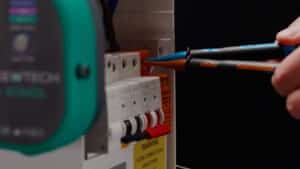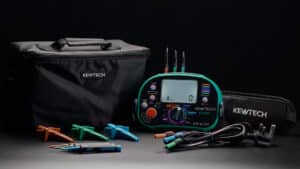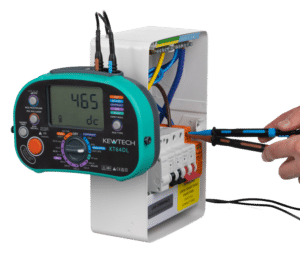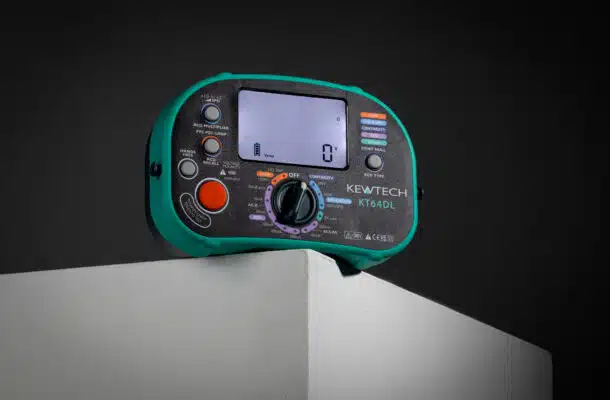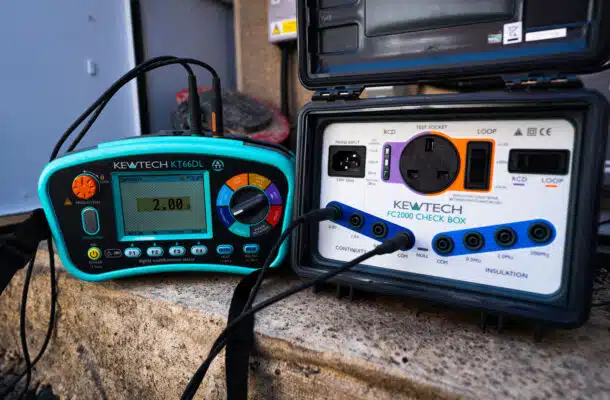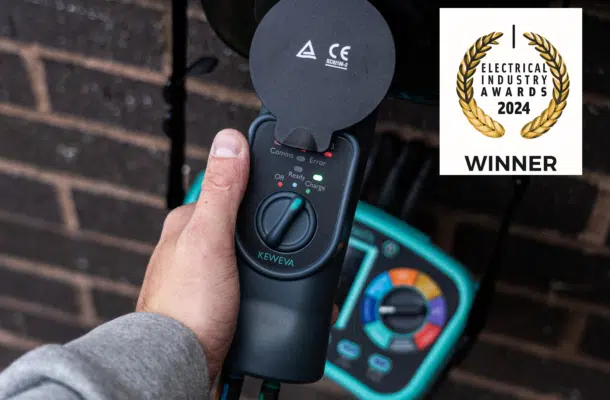Why and how to test SPD’s?

The Importance of SPD’s
Surge Protection Devices (SPDs) are essential for protecting electrical systems and sensitive electronic equipment from voltage surges caused by external factors such as lightning strikes, power grid fluctuations, and switching operations. These voltage spikes can cause irreversible damage to electrical components, leading to costly repairs and downtime. SPD testing is something to consider to ensure that these devices are functioning correctly and will protect your systems when needed most.
Why test an SPD?
Electrical surges are unpredictable and can occur for a variety of reasons:
- Lightning strikes: These can cause severe voltage spikes that travel through power lines, damaging electrical equipment.
- Switching operations: The process of turning electrical devices or large machinery on or off can create voltage spikes that may affect sensitive electronics.
- Power grid fluctuations: Variations in the power supply can lead to surges that risk damaging connected equipment.
The consequences of not protecting sensitive equipment from these surges can be severe, including breakdowns, data loss, and expensive repairs. In some cases, damage to critical infrastructure may even lead to safety hazards. To prevent this, SPDs are installed in electrical systems to divert excess voltage to the ground, protecting both equipment and personnel.
However, over time, SPDs can lose their effectiveness or become damaged themselves, and although SPD testing is not currently mandatory, doing so can provide additional peace of mind that the devices are still functioning as expected to provide the necessary protection.
Kewtech Equipment for SPD Testing
Kewtech, a leading provider of electrical testing equipment, offers a range of advanced electrical testing equipment specifically designed to make SPD testing straightforward and reliable, helping you maintain a safe electrical environment. These tools are trusted by electrical professionals for their accuracy, ease of use, and durability.
One of the key tools for SPD testing from Kewtech is the KT64DL multifunction tester. This device is equipped with the ability to conduct comprehensive tests on SPDs, ensuring that they are operating within the required specifications. Here’s how the KT64DL helps ensure the effectiveness of SPD testing:
The KT64DL simulates a voltage surge, allowing you to check the SPD’s ability to clamp and divert excessive voltage. This is a critical test to verify that the SPD can handle potential surges without damaging the connected equipment.
Kewtech’s SPD test also assesses the SPD’s energy absorption and discharge capacity. This ensures that the SPD can safely handle repeated surge events over time without degrading, guaranteeing long-term protection for your electrical systems.
As the test produces a surge of up to 1000V with a maximum of 1mA, the energy dissipated across the SPD is less than 1 Watt, which does not harm the SPD’s life. The test then performs a calculation to provide you with your DC and AC breakdown voltage values.
Other models with an SPD testing facility include the KT66DL advanced Multifunction tester and the KT300DL Single Function Insulation / Continuity tester.
The Role of Regular SPD Testing
Even though SPDs are designed to last, regular testing is necessary to ensure their continued effectiveness. Over time, surge protection devices can degrade due to repeated surges or environmental factors, such as moisture or heat. Testing SPDs regularly with Kewtech’s reliable tools allows electrical professionals to detect potential failures before they lead to damage or safety concerns.
It is recommended to perform SPD testing during the initial installation of an SPD and then periodically (every 12-24 months) to confirm ongoing protection. In environments where surge activity is more frequent or severe, such as industrial settings or areas prone to lightning strikes, testing may need to be more frequent.
